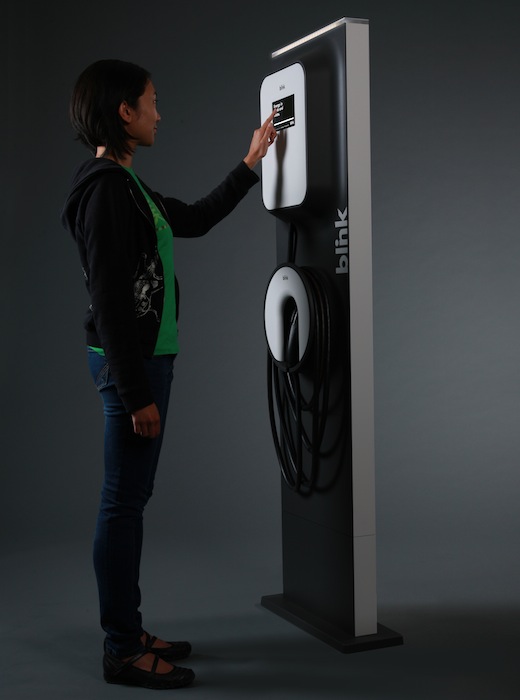Install a Charging Station
So you’re interested in setting up an electric car charging station? Here's some tips and ideas for bringing a charger online at your home or business.
How is Electric Vehicle Charging Different From Charging Anything Else?
In many ways charging an electric car is just as simple as what you’re used to when charging a cell phone or plugging in an appliance, but there are new standards that make the required equipment different than anything you may have seen before. There are three “levels” of charging equipment available and each level has different requirements in terms of voltage and amperage coming from your power supply; please see our section on “Available Equipment” for a quick rundown of those different charging levels and the types of equipment we’re talking about.
Power Requirements
Most electric cars can charge from a standard 120 volt three-prong outlet using equipment that comes with the vehicle. This Level 1 charging is slow—adding only about 5-6 miles of driving range for every hour of charging—and will not meet the needs of most uses in anything but an emergency or specialized applications. It also depends on outlets being available within 20 feet of where the vehicle is parked.
In order to provide electric vehicles with sufficient and useful charging times, most EV drivers and commercial property owners will want to opt for the higher speed Level 2 charging, which can add between 15 and 30 miles of driving range per hour of charging. For locations such as airports—where vehicles are typically parked for long times—Level 1 will often suffice as a normal charging method. Level 1 equipment is generally a fraction of the cost of Level 2 equipment.
Level 2 charging requires a hardwired connection into your power supply on a circuit rated at 240 volts and at least 40 amps—although it can support anywhere from 15-80 amps. This is very similar to the requirements of your standard electric dryer. If you don’t have an open breaker rated at 240 volts and 40 amps, you will need to get that installed. In addition to the circuit breaker requirements, Level 2 charging requires special charging stations that use a new industry standard called the “J-1772″ connector. Level 2 stations should be located at the parking spots where you expect/want electric cars to park. Altogether installation of a Level 2 station will likely cost between $1,500 and $4,000 depending on existing power supplies, distance from the circuit breaker to the installation location, required labor, and equipment chosen. Keep in mind that there is a 30% federal tax credit available—up to $1,000 for individuals and $50,000 for businesses—which will reduce the net cost of purchasing and installing a station.
Another type of charging is called DC Fast Charging. This is a type of charging meant specifically for very high speed charging—adding about 80 miles of driving range in 20-30 minutes of charging—on commercial properties such as gas stations where drivers are already used to “filling up.” DC Fast Charging requires industrial power supplies rated at higher than 400 volts and 80 amps—it also requires three-phase power, which is only commonly found in industrial locations. DC Fast Charging uses very specialized equipment that costs in the range of $50,000 to $100,000 to install depending on equipment chosen, distance from the power source and existing infrastructure.
Things to Consider
Although adding electric car charging to your business can help to draw in new customers, provide excellent branding opportunities, and create new ways to get media coverage of your business (see our section on Charging Station Benefits), you may not want to place the EV parking spots with stations in prime parking locations. For some time to come they may sit empty on many days, taking valuable real estate away from other parking customers. Conventional wisdom says to put the “EV Charging Here” sign out front and the dedicated parking space either in back or some other location that is not prime parking.
Charging stations are as different as the manufacturers who build them. Some are parts of nationwide networks that will do all the maintenance, upgrading and billing for you, whereas some are simply stand alone devices that leave it entirely up to you to maintain. Some stations have the option to add things such as key card or keypad access and are wirelessly connected to the internet, whereas others are just “dumb” stations that have no bells and whistles. Of course, expense scales with the number of features.
Will you be charging money for the use of your station? It is currently illegal in the state of Washington to resell electricity, but you can make the use of the charging station tied into other activities such as staying the night in a hotel or purchasing something in your store. There are side benefits to having a charging station at your business such as increased media coverage and branding opportunities, so the hassle of trying to keep track of who is using your charging station may be more trouble than it’s worth and you may decide to simply give away the power for free, considering that each charge will only add a few pennies to your electricity bill.
When it comes to purchasing charging stations, there are a few different options.
Types of Charging Stations
There are three “levels” of charging that electric vehicles can use to charge at different rates.
Level 1: Your standard, three-prong household outlet. Rated at 110-120 volts. Can add a maximum of about 6 miles of driving range per hour of charging. Most electric cars come with an included adapter that allows you to charge from a household outlet.
Level 2: A specialized faster charge that uses a new industry standard called the “J-1772″ connector. Requires special equipment that is sold separately from the vehicle. Rated at 220-240 volts. Adds between 15 and 30 miles of driving range per hour of charging, depending on the vehicle.
DC Fast Charging: Also referred to as “Level 3″ in many places, although this isn’t technically correct. Requires special, more expensive equipment that relies on high voltage to deliver a direct “dump” of electricity into a vehicle’s batteries. Rated at very high voltages (400+) and amperages (80+). Generally meant for commercial/industrial installations. Vehicles have to be specially equipped to be able to take advantage of DC Fast Charging. Adds about 80-100 miles of driving range in 20-30 minutes.
Keep in mind that every vehicle and manufacturer is different when it comes to what type of charging is supported and at what rate. For instance, the 2011 Nissan LEAF supports all 3 levels of charging, however Level 2 charging is currently only supported at the slower 15 miles of range added per hour of charging and DC Fast Charging is only supported as an add-on option. Be sure to ask questions about what kinds of charging is supported when you do your vehicle research.
Available Charging Equipment
Plug In America, an electric vehicle advocacy organization, keeps a detailed and frequently updated list of available charge stations and their prices (when known).
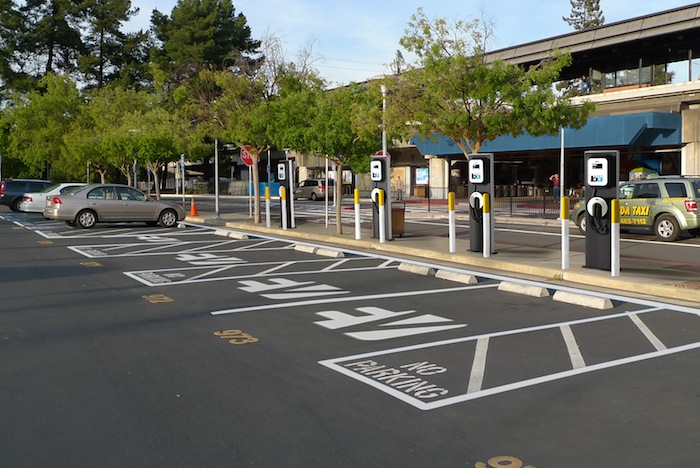
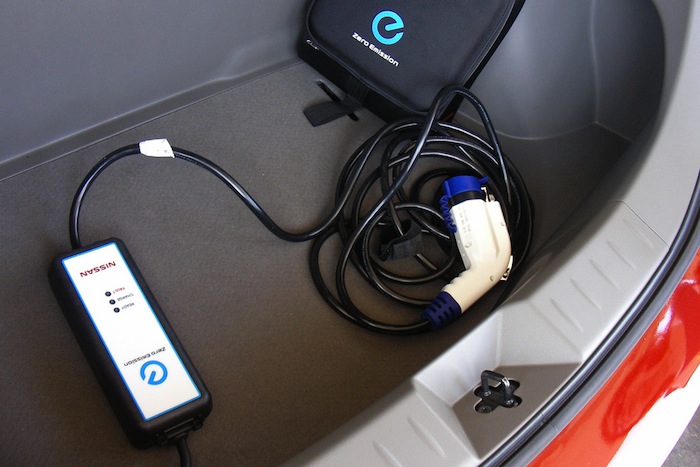
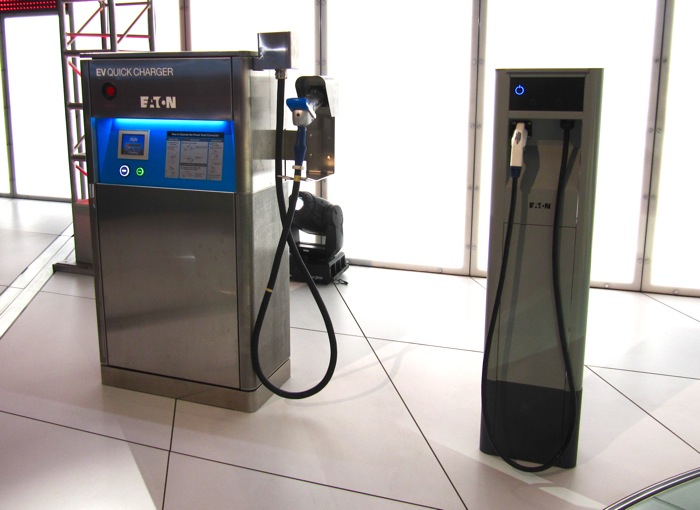
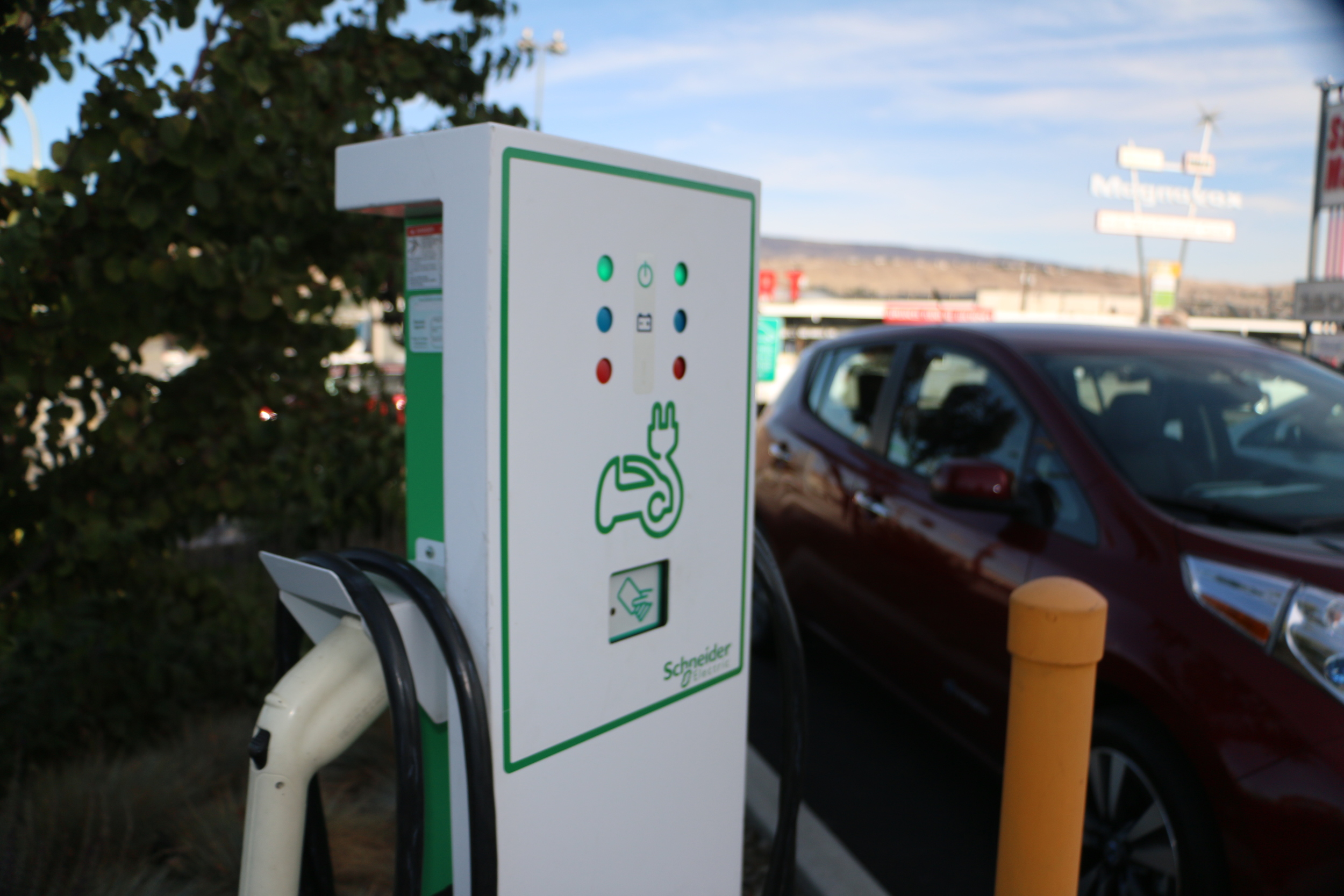
Please feel free to contact Plug-In North Central Washington to discuss charging station considerations in greater detail.


